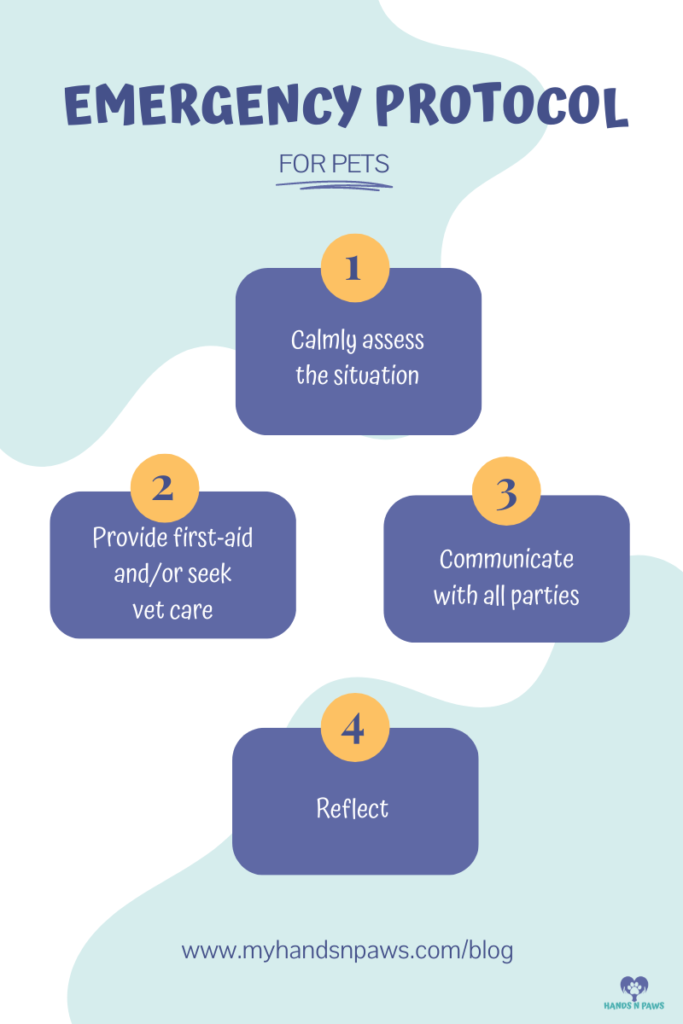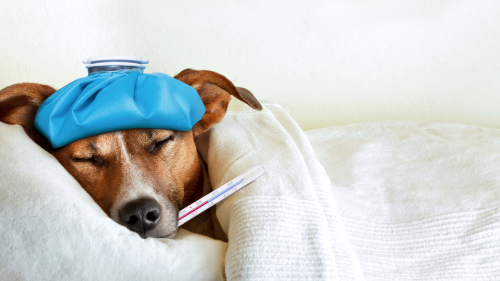Did you know that over 70% of pet owners will experience a pet emergency at some point in their furry friend’s life?
From sudden illnesses to unexpected injuries, emergencies can strike when we least expect them. With the right knowledge and preparation, however, you can be ready to spring into action and save the day for your beloved pet.
In this comprehensive guide, we’ll unravel the mysteries of pet emergencies, equipping you with the skills and confidence to handle any situation that comes your way.
General Emergency Protocol
Step 1: Calmly Assess the Situation
In the face of a pet emergency, maintaining composure is essential. Take a moment to collect yourself and carefully assess your pet’s condition. Look for any visible injuries, such as cuts, bruises, or signs of trauma, and observe for distress signals like labored breathing or unusual behavior. Your calm demeanor and assessment will not only help you make informed decisions but also provide much-needed reassurance to your pet during this stressful time.
Step 2: Provide Basic First Aid/Seek Vet Care
During a pet emergency, administering immediate first aid can make a significant difference in your pet’s outcome. You should have a pet first-aid kit handy (see list of essential items below). If possible, apply pressure to stop bleeding, stabilize broken limbs, or address any immediate threats to your pet’s safety. Handle your pet with care and reassure them throughout the process. If unsure of what to do and/or the emergency is severe, seek guidance from your veterinarian or an emergency clinic ASAP. Prepare your pet for transport to the clinic if necessary, ensuring their comfort and security during the journey. Stay vigilant for any changes in your pet’s condition.
Step 3: Communicate with All Relevant Parties
Effective communication is vital in ensuring your pet receives the help it needs during an emergency. If you’ve contacted the veterinarian, clearly describe the situation, follow their instructions, and prepare to transport your pet to the clinic promptly. If you’re a pet sitter in Columbus providing care for someone else’s pet, reach out to the pet parent to keep them informed. Additionally, if you’re part of a pet sitting team, inform your colleagues about the situation. Throughout the process, stay vigilant (as outlined in the above step), monitoring the pet’s symptoms closely to provide clear and frequent updates on the pet’s condition. Clear and timely communication ensures that everyone involved is informed and can offer the necessary support during this critical time.
Step 4: Reflect
Once the situation has settled, take a moment to reflect on the incident, pinpointing the lessons learned and evaluating your approach. Consider seeking further education or training to enhance your skills and preparedness for future emergencies, which will better equip you to handle a wide range of pet emergencies effectively.
For convenience, check out the information below to familiarize yourself with how to respond to common pet emergencies. Below that, you can also explore the additional resources provided, giving you direct access to formal pet first-aid courses. With proactive measures and ongoing attention to your pet’s well-being, you can maximize the chances of a positive outcome in any emergency situation.

Common Injuries and How to Respond
Pets, like humans, can be prone to injuries from various sources. Knowing how to recognize and respond to common pet injuries can make a significant difference in your furry friend’s recovery. Here are some prevalent pet injuries and candid steps to take in each situation:
Cuts and Abrasions
- Recognition: Cuts and abrasions are visible wounds on your pet’s skin, often accompanied by bleeding.
- Response: Clean the wound gently with lukewarm water and apply pressure using a clean cloth or bandage to stop bleeding. If the cut is deep or extensive, seek veterinary attention promptly to assess the need for stitches or further treatment.
Fractures and Broken Bones
- Recognition: Fractures or broken bones may cause limping, swelling, or visible deformities in the affected area.
- Response: Immobilize the injured limb by using a splint or a makeshift bandage to prevent further damage. Avoid moving your pet unnecessarily and seek immediate veterinary care for proper diagnosis and treatment.
Heatstroke
- Recognition: Heatstroke occurs when your pet’s body temperature rises to dangerous levels due to prolonged exposure to high temperatures.
- Response: Move your pet to a cool, shaded area and offer them water to drink. Use cool water or damp towels to lower their body temperature gradually. Seek veterinary assistance promptly as heatstroke can be life-threatening if left untreated.
Ingestion of Toxic Substances
- Recognition: Signs of poisoning may include vomiting, diarrhea, seizures, or lethargy after ingesting toxic substances.
- Response: If you suspect your pet has ingested something toxic, contact your veterinarian or a pet poison helpline immediately for guidance. Provide information about the substance ingested and follow their instructions carefully.
Burns
- Recognition: Burns can result from exposure to heat, chemicals, or electrical sources and may appear as red, blistered skin or charred areas.
- Response: Flush the burned area with cool water and cover it with a clean, damp cloth. Avoid applying ointments or creams and seek veterinary care to assess the extent of the injury and provide appropriate treatment.
Eye Injuries
- Recognition: Symptoms of eye injuries include redness, swelling, discharge, or squinting.
- Response: Rinse your pet’s eye gently with saline solution or clean water to remove any foreign objects. Avoid touching or rubbing the eye and seek veterinary attention promptly to prevent further damage.
Lacerations from Animal Attacks
- Recognition: Lacerations from animal attacks may result in puncture wounds, torn skin, or deep cuts.
- Response: Clean the wound thoroughly with antiseptic solution and apply pressure to control bleeding. Seek veterinary care to assess the risk of infection and determine the need for stitches or antibiotics.
Your Best Investment: Pet First Aid
Courses
To advance your knowledge of pet first aid and safety, enroll in courses offered by reputable organizations, utilize online resources, and invest in pet first-aid guidebooks authored by professionals. Here are some of the most popular first-aid courses currently:
- American Red Cross: Cat & Dog First Aid Online Training
- Recover Pet CPR Training
- Pro Pet Hero Online CPR Training
You can also attend local workshops or seminars, and even stay updated on the latest advancements in pet first aid through newsletters, forums, and continuing education programs.
By actively engaging in learning opportunities and staying informed, you’ll be better equipped to protect those furry companions and provide them with the care they need in emergencies.
Kits
You may also consider having a pet first-aid kit handy at all times. You can either purchase one or make your own! A well-stocked first-aid kit can be a lifesaver in emergencies. Here’s what we recommend should be in it:
- Gauze pads and rolls
- Adhesive tape
- Antiseptic wipes or solution
- Tweezers
- Scissors
- Styptic powder or pencil (to stop bleeding from minor cuts)
- Hydrogen peroxide (to induce vomiting, but only under the guidance of a veterinarian)
- Digital thermometer
- Instant cold pack
- Emergency contact information for your veterinarian and local animal emergency clinic
Store your pet first-aid kit in a designated, easily accessible location in your home. This is beneficial for not only you, but also your Columbus pet sitter should they ever have to use it on services with your pets. It provides peace of mind and allows for prompt intervention, potentially preventing a minor issue from escalating into a more serious situation. Always remember to periodically check and replenish the contents of your kit to ensure its effectiveness in times of need.
Handle Pet Emergencies with Ease
In conclusion, being prepared for pet emergencies is crucial for every pet owner and sitter. Arm yourself with Internet knowledge, create a pet first-aid kit, and enroll in courses to ensure you can confidently handle any situation that arises, providing the best care for your furry friends.
Take action today to safeguard your pet’s well-being and peace of mind for yourself and your loved ones.















